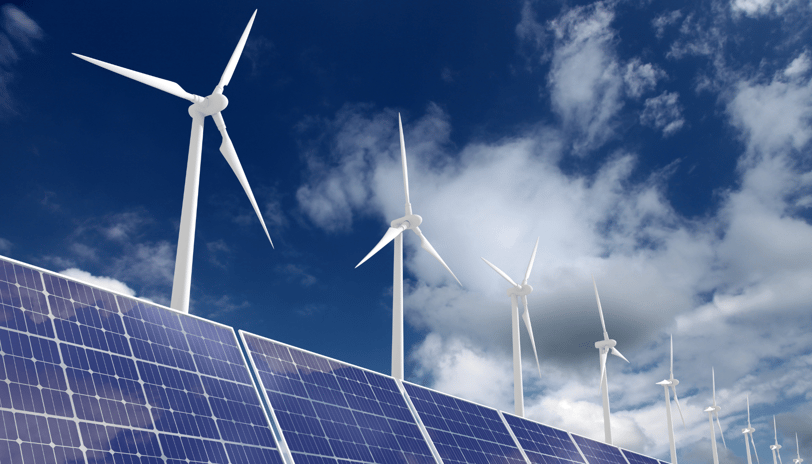From EVs to Renewable Energy: India's Bold Steps Against Global Warming
India emerging as a leader in renewable energy and electric vehicles, with significant advancements in solar, wind, and green hydrogen. Learn about India's ambitious climate goals, innovative government initiatives, and its commitment to sustainable development.
CLIMATE | ENERGY
27 May 2024
India's electric vehicle (EV) sector is finally gaining momentum, with major Indian players like Tata Motors and Mahindra stepping up their game. This comes as no surprise given that global leaders like China, the US, and various European nations have already set high benchmarks in the EV market, spanning from manufacturing to sales.
However, India has a positive outlook—it is not only participating in the three-wheeler electric vehicle market but also leading the way. Alongside China, these two nations account for a staggering 99% of global sales in this segment. This dominance highlights India’s potential in the EV market, particularly in urban transportation.
Why are electric vehicles so crucial? The answer lies in our battle against global warming. The rapid melting of glaciers and extreme weather patterns are undeniable indicators of this global crisis. EVs represent one of our most potent weapons in this fight, primarily because they reduce reliance on fossil fuels and lower greenhouse gas emissions.
The Paris Agreement, adopted in 2015 by 194 countries plus the EU, underscores this urgency. It aims to limit global temperature rise to well below 2°C, ideally keeping it to 1.5°C above pre-industrial levels. This ambitious target is crucial to mitigating the severe impacts of climate change. To achieve it, global greenhouse gas emissions need to be drastically cut, aiming for net-zero by the mid-21st century. Specifically, emissions must be halved by 2030 to keep warming below 1.5°C, based on each country's pledged contributions.
India's commitment to this cause is reflected in its impressive standing in the Climate Change Performance Index (CCPI). Ranked 7th with a score of 70.25, India surpasses many major countries: Germany (14th), the UK (20th), France (37th), China (51st), and the US (57th). The CCPI evaluates 63 countries plus the EU, covering over 90% of global emissions, across four categories: GHG Emissions, Renewable Energy, Energy Use, and Climate Policy. No country has yet achieved a "very high" performance, indicating that even the frontrunners need to intensify their efforts to prevent the perilous climate change.
Despite the strides made, all major economies, including those with smaller populations, are lagging in climate change mitigation. In contrast, India and China, with their massive populations and energy demands, are making notable efforts. Both nations are deftly balancing their development needs with their climate commitments.
India's Emissions in a Global Context
To understand India's position better, let's look at the latest figures for total and per capita emissions:
Total Emissions: India is the third-largest emitter of carbon dioxide globally, after China and the United States. As of 2023, India's total CO2 emissions are approximately 2.65 billion tonnes annually.
Per Capita Emissions: Despite its large total emissions, India's per capita emissions are significantly lower than those of major economies. In 2023, India's per capita CO2 emissions were about 1.9 tonnes, compared to the global average of 4.7 tonnes. For context -
United States: 15.5 tonnes per capita
China: 7.6 tonnes per capita
European Union: 6.4 tonnes per capita
Germany: 8.7 tonnes per capita
These figures highlight that, while India is a major emitter in absolute terms, its per capita emissions are much lower than those of more developed nations. This discrepancy underscores the need for equity in global climate policies, taking into account historical emissions and developmental needs.
India’s Ministry of New and Renewable Energy; envisions developing cutting-edge renewable technologies to make the country a net foreign exchange earner while enhancing national energy security. As of April 2024, India boasts a combined renewable energy capacity of 191.67 GW, showcasing its diverse energy portfolio.
Wind Power: 46.16 GW
Solar Power: 82.63 GW
Biomass/Cogeneration: 10.35 GW
Small Hydro Power: 5 GW
Waste to Energy: 0.59 GW
Large Hydro: 46.92 GW
This diversity is a testament to India's commitment to sustainable energy.
Government Initiatives Driving Change
Solar Power Initiatives:
Solar Parks: 50 solar parks with a total capacity of 37.49 GW have been approved.
Floating PV Projects: Innovative solutions to land constraints are on the rise.
Wind Power:
Offshore Wind Energy: Aiming for 30 GW by 2030, India has identified potential sites, expanding beyond onshore installations.
Green Hydrogen:
National Hydrogen Mission: Launched with an ₹19,744 crore outlay, targeting 5 million tonnes of green hydrogen production by 2030, supported by 125 GW of renewable energy.
Hybrid Policies:
Wind-Solar Hybrid Policy: Promotes grid-connected hybrid systems, improving transmission infrastructure efficiency, and addressing intermittency issues.
Energy Storage and Transmission:
Battery Energy Storage Systems (BESS): Supported by the Union Budget 2023, with 4 GWh of BESS through viability gap funding.
High Voltage Direct Current (HVDC) Transmission: Projects in conjunction with renewable energy initiatives enhance grid integration.
Production Linked Incentive (PLI) Scheme:
A key part of the AatmaNirbhar Bharat initiative, with a budget of ₹24,000 crore aimed at boosting solar PV module manufacturing.
Future Goals and Challenges
India has set several ambitious targets to transform its energy landscape:
500 GW of Renewable Energy by 2030 - This includes various renewable sources, with a significant focus on solar and wind power.
50% of Electric Power from Renewables by 2030 - This goal aligns with India's commitment to reducing its carbon footprint.
Net-Zero Carbon Emissions by 2070 - A long-term goal to ensure a sustainable and carbon-neutral future.
While these goals are formidable, the challenges are equally significant. Building the necessary infrastructure and attracting investment are critical hurdles. However, India’s unwavering commitment positions it as a mature and responsible player in the global fight against climate change, proving that with concerted effort, progress is achievable.
As the world faces an unprecedented crisis, India’s balanced approach to development and environmental stewardship serves as an inspiring model for nations worldwide.


